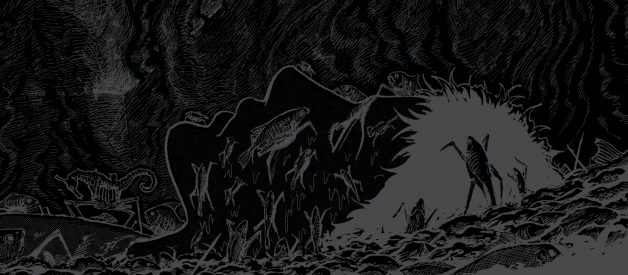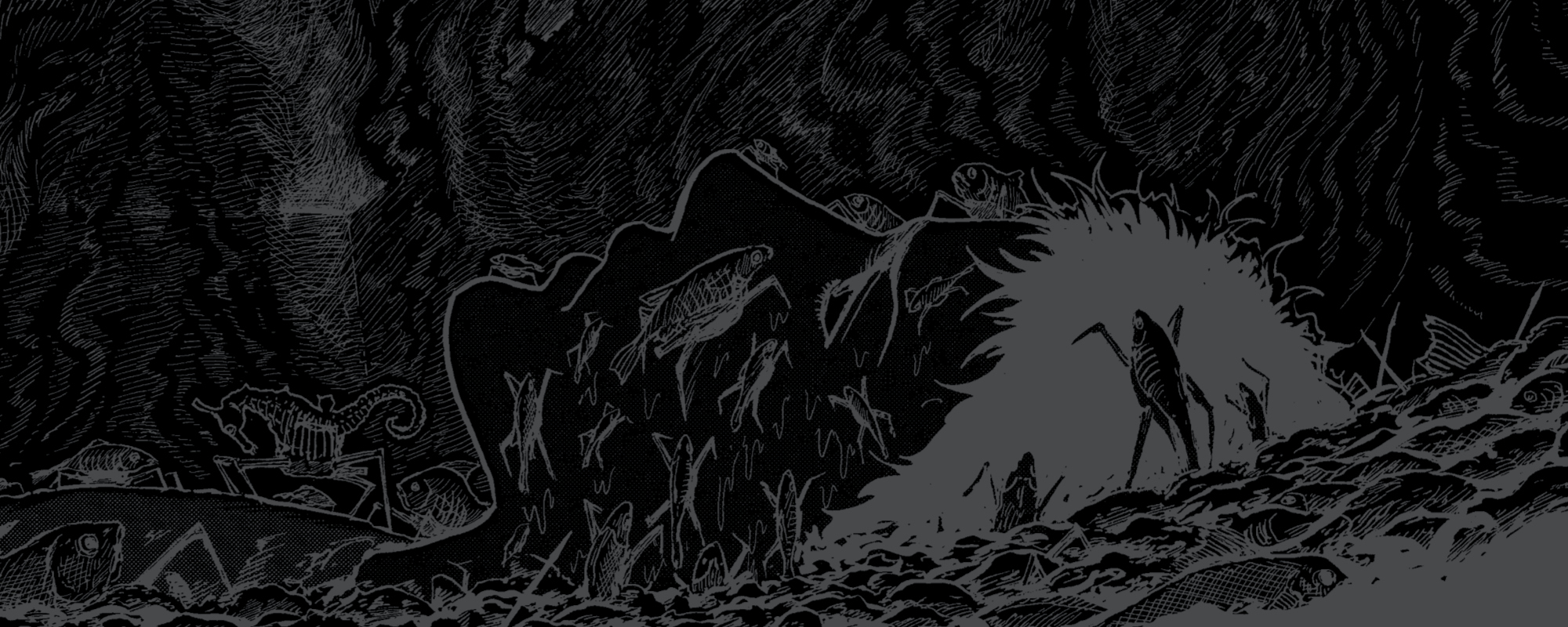
This is part four of a series of blogs dedicated to the works of Junji Ito that I have read. The third part focused on my thoughts on the spiralling madness that is ?Uzumaki?, whilst this one will explore my thoughts and opinions on ?Gyo? as well as the two bonus short stories that are included in the Viz Media publication I own. Whether these short stories are included in any other publications of the work, I do not know.
Those short stories are:
- The Sad Tale of The Principal Post
- The Enigma of Amigara Fault
If you wish to read about the blog I wrote about ?Uzumaki?, a link for that blog will be left in the link below.
The Grotesque Tales of Junji Ito ? Part 3: Uzumaki
Part 3 of a series where I discuss my thoughts and opinions on the works of Junji Ito that I have read. This one will?
medium.com
There are some mild SPOILERS from this point onwards as well as some potentially disturbing images and subjects. If body horror and horror revolved around illness makes you sick, I highly advise you to avoid this blog or enter at your own discretion. Consider this your warning folks!
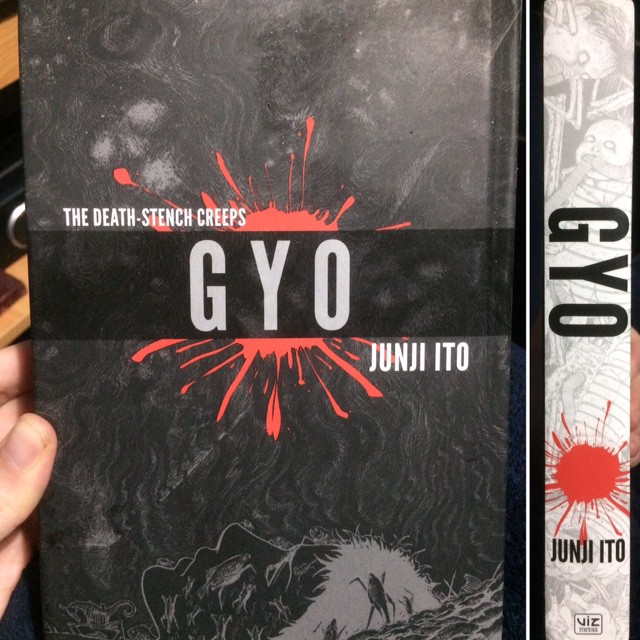
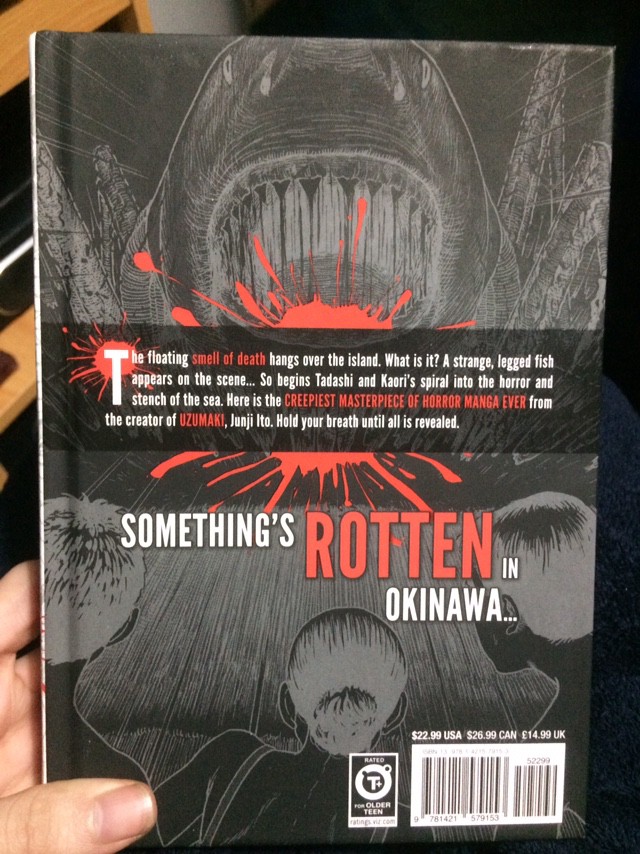 ?Gyo? is not as large as ?Uzumaki? or ?Tomie?.
?Gyo? is not as large as ?Uzumaki? or ?Tomie?.
My Thoughts on ?Gyo?
Gyo Ugomeku Bukimi appeared as a serial in the weekly manga magazine Big Comic Spirits from 2001 to 2002. Shogakukan collected the chapters into two bound volumes from February 2002 to May 2002. The Viz Media publication has the complete story in one book and was released in 2003.
Like a lot of Junji Ito?s works, Gyo?s plot is quite frankly absurd. The story revolves around a couple, Tadashi and Kaori, as they fight to survive against a mysterious swarm of undead fish with metal legs powered by an odour that will be known as the ?death stench? throughout the novel.
Most of the discussions I have seen about ?Gyo? have revolved about how frightening the fish machines are. The most notable example I will bring to your attention is the influence Junji Ito had on Guillermo del Toro. For those in the unknown, Guillermo del Toro is the director responsible behind such films as ?The Shape of Water?, ?Pacific Rim? and ?Hellboy?.
This influence of his was bought to light during an interview with IGN about his collaboration with Hideo Kojima (the mad mind behind the ?Metal Gear? franchise and the upcoming ?Death Stranding?) when they were both working on ?PT?, the fantastic tech demo that would have become ?Silent Hills? had it not been for its cancellation by Konami, the developers and publishers of the game. To quote some of the interview for you, del Toro said:
?Ito is completely one of the masters? I like people who get high on their own supply. I get high on my own supply. I?m like Scarface at the end. I grab my movies and I? [del Toro snorts imaginary cocaine off the table]. I don?t have an objective distance. I?m not postmodern. I just? [snorts again] go face in, you know? And I think Ito is the same way. In the way that you feel Dario Argento in the early movies was getting off on each murder or you feel David Cronenberg was secretly aroused by body horror ? in the same way, you feel Junji Ito being titillated at a very basic disturbing level by his stuff.?-Guillermo de Toro, 2015
You can find the written interview here and I will leave the YouTube video for you to watch below, as I think it is both very interesting and entertaining.
Guillermo de Toro on Junji Ito?and high off his own supply?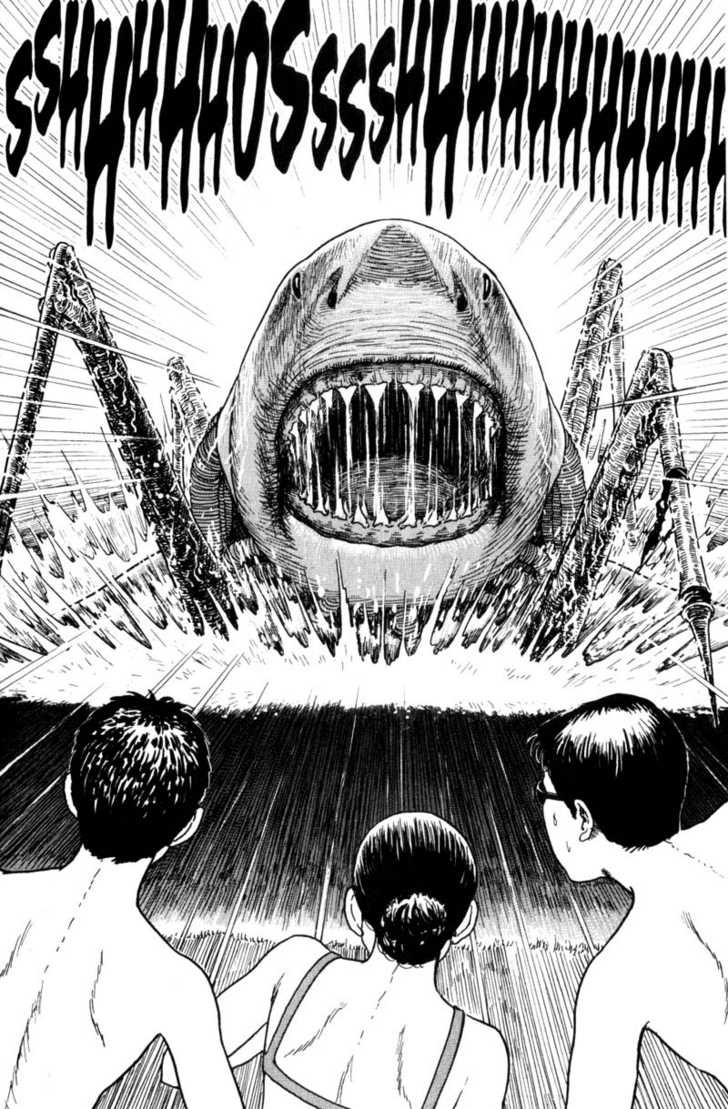
If you don?t wish to read/watch the interview, I will mention that del Toro also stated that when he read ?Gyo? and saw the shark, he screamed and threw the book, as it coincided about his nightmares of being eaten and his fear of sharks. It is a pretty frightening part in the story I will admit. Up until this point in the story, these legged-fish are not really that threatening. They scare Kaori because of their smell (it is revealed she has a REALLY sensitive sense of smell to the point she becomes incredibly annoying at a ridiculous pace). We also don?t know that these fish are actually dead and are fueled by this death stench at this point in the story, so when the reader is first introduced to the shark, it is terrifying to think what carnage this ?living? shark will cause on land. You can tell that Junji Ito was inspired by ?Jaws? when he was working on ?Gyo?.
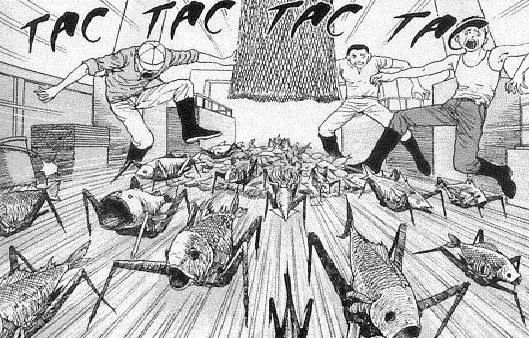
To me, the chapters that include the shark are the closest things that Junji Ito has created that can be described as ?jump scares?. I feel really bad for saying this, but that is just how I feel. I was never really frightened by the fish either. The sheer multitude of fish that swarm onto Okinawa prod at curiosity than terror (for me at least) as it is only their sharp pointed legs that seem to be the killers, not the fish themselves. The shark does not kill our protagonists either, so I was less frightened by the second shark as I knew it was not something to be all that dangerous.
What began to make me feel uneasy was the introduction of Tadashi?s uncle in Chapter 5 (titled ?Flight?). Doctor Koyanagi is struggling with inspiration for his work is oblivious to the world outside his home/study, for he does not watch television (one can presume he does not own a radio either). Rather than showing some level of concern for these mech-fishes and the shark that destroyed the house his nephew and girlfriend were staying in, he wishes to study these things, as the way they are described to him reminds him of some ramblings of his father. He is the only one in the story that is not all worried by them.
He would later mention these ramblings in further detail, explaining that during ?the war? (presumably World War II, for reasons I will explain later on), his father worked on biological experiments, accidentally creating a new mutation of a germ that would cause the test animals to swell up and produce an awful smell the ?reeked of rotting flesh?. Koyanagi’s father was called to mass produce machines that would carry these dead animals into battle to nauseate the enemy. The plan never went ahead for the machines were bombed in boats and were lost at the bottom of the sea (it is better explained in the story than here I assure you).
Things become far more grotesque when Doctor Koyanagi wishes to not only create a machine of his own but, improve on his father?s own design using the now infected, partly dead Kaori as a test subject, with no regards for the morals behind it, as well as the original machines capturing other infected humans to replace their former decayed fish riders(?).
One thing I find highly fascinating about this is that (at this moment in writing) this is the most involved origin story of Junji Ito?s I have seen. Sure, ?Tomie? has a whole short story to explain her curse, but there are a lot of questions that the reader will have over that collection of stories about her affliction. Having had this horrifying back story in ?Gyo?, I felt really uncomfortable at the idea of biological experiments of this nature. It is one thing for mankind to have such little regard in each other to willing kill each other for one reason or another, but to partake in such torturous experiments on innocent bystanders such as cats and dogs? It made my stomach curl (as well as everything from chapter 7 (?Testimony?) onwards). Once I finished reading it for the first time, I tried not to think about it, as I did not wish to feel uncomfortable and sick about the possible implications of Junji Ito?s writing. I won?t lie, it made me feel terribly weak. That being said, it would not be long however when I ?accidentally? thinking about it again.
As a gamer, I watch plentiful videos on YouTube about video games, often game reviewers. One of these reviewers is a cynical Brit under the alias ?Yahtzee?, who reviewed a weird Japanese game called ?Katamari Damacy Reroll?. The reason why I bring this up here is because, in that video, he casually brings up Unit 731 in an attempt to show the viewer how quirky Japan is in the context of the game and its developers. Having never heard of this before and being somewhat a naive fool, I went looking into this and I highly regret it.
Yahtzee?s ?Katamari Damacy Reroll? review
Unit 731 was a covert biological and chemical warfare research and development unit of the Imperial Japanese Army that undertook lethal human experimentation during World War II. It was responsible for some of the most notorious war crimes carried out by Imperial Japan and I was disgusted by what I saw and read. Body mutilation, rape and enforced pregnancy, as well as germ warfare, were just some of those things that were ?tested?. I will spare the specifics as I condemn it greatly. This is why I believe the aforementioned experiments (in Gyo) took place during The Second World War and clearly provided some inspiration to the horror writer.
Codetta
There are two main commentaries that can be drawn from this work of fiction. The first is obviously Junji Ito?s attempt to make the reader aware and uncomfortable with the concept of biological and chemical warfare research, and the disgusting results of these obsessions. The second, however, is my own thoughts about how Junji Ito wants the reader to view Japan. Since the Second World War, the anime and manga industries in Japan have exploded, influencing many in Japan and in the west. I have already mentioned Junji Ito?s influence on del Toro but he has made it known several times he is an avid lover of anime and manga, saying in the already mentioned interview he is like ?a bull in a china shop? when he?s in Japan. It is this level of obsession some have I believe Junji Ito is wishing to address in ?Gyo? as well.
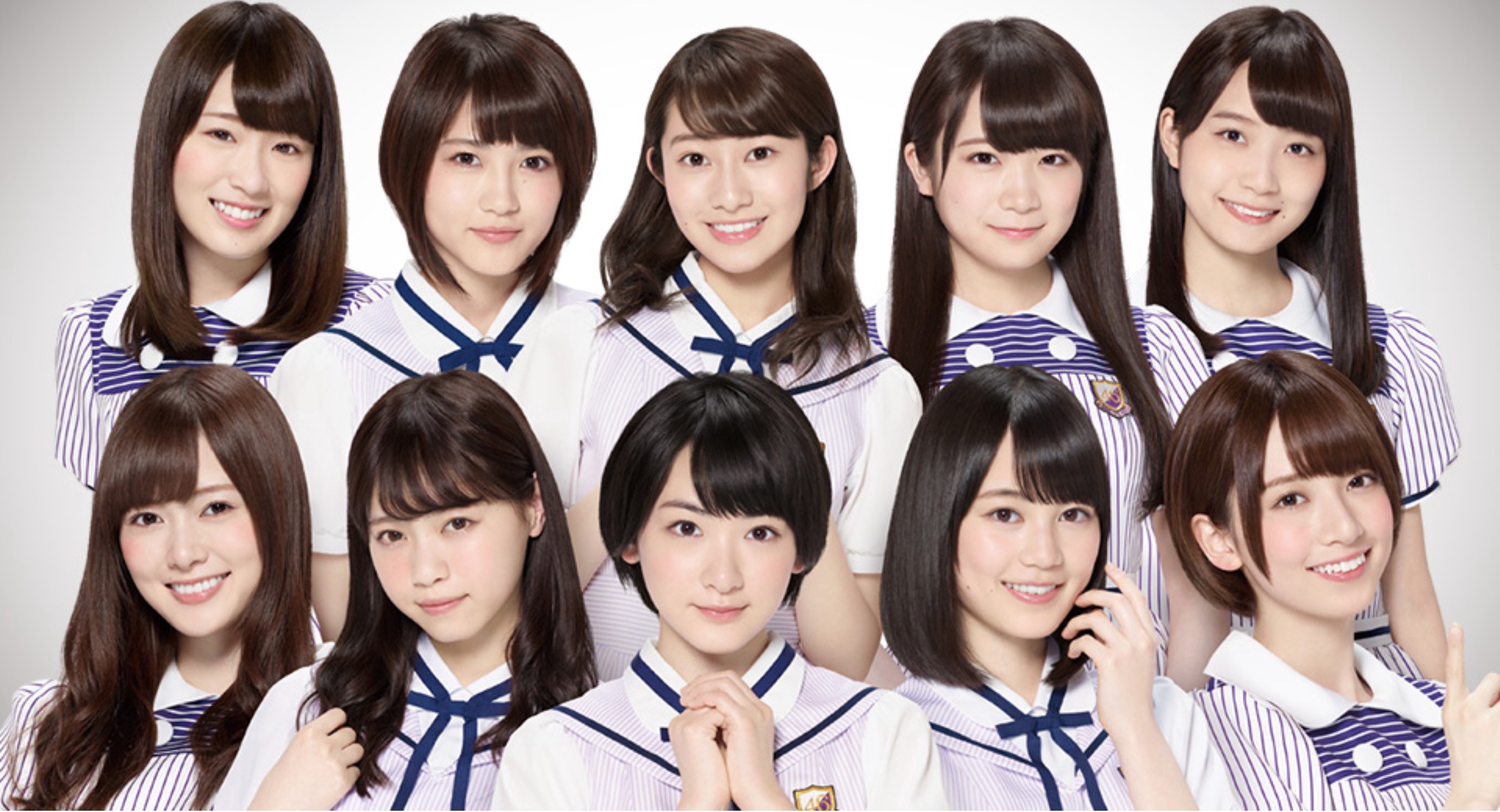 Nogizaka46 (photo source: nogizaka46.com)
Nogizaka46 (photo source: nogizaka46.com)
I will admit the small pockets of manga I have read and anime I have watched have been thoroughly enjoyed. A lot of manga and anime is presented in these overly fantastical, overly perfect worlds where all the cast is bright, colourful and obnoxiously happy and positive about everything and anything. Alongside certain Japanese games, such as the ?Persona? franchise, Japan has become this absolute haven for weeaboos and technophiles who can dine on ramen and sake until they burst. Japan and its culture are celebrated by thousands of people across the world, and yes all of the things I have mentioned can all be great things, but this is not the Japan that Junji Ito is trying to show you. From what I read, Junji Ito rarely includes real places in his story, and Tokyo and Okinawa are both very real and I think that they are both very deliberate choices of locale, other than the Okinawa province is located by the sea. Japan has a very dark history and a lot of its culture causes friction with the western world. To name another example, The ?Idol? culture is something that is not as happy-clappy as you would initially believe.
I will admit that I don?t know everything about Japan and it?s culture and history and I don?t want to ruin everyone?s fun, but just remember that Japan is a quirky place and nothing is ever as good as it seems. This may be obvious to some reading this, but there is an obsession many within the western world has with this country, and I wish to bring some level of realism to such enthusiasts. It is ok for people to love a country or place for A, B or C, but to ignore the nasties of X, Y, or Z would just be daft. To use an example, I love the UK and being a truly British person, snorting and injecting myself as much culture as humanly possible, as that is what I believe being a true British person is about, contrary to the current political climate known as Brexit. I am also aware of how bloody and nasty our history is, such as being the creators of the concentration camp.
In short, nothing is perfect.
My Thoughts on ?The Sad Tale of The Principal Post?
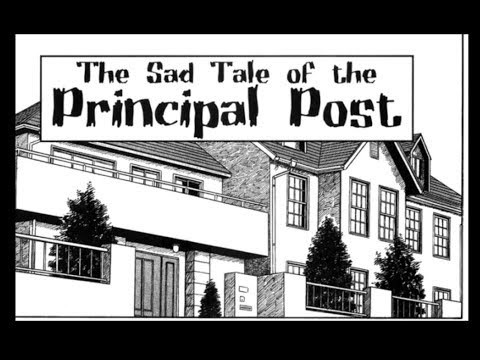
?The Sad Tale of The Principal Post? is the first of the short stories in this publication and is probably the shortest of all of Junji Ito?s stories, consisting of only four pages. The only comic stories I can think of that is shorter is any of the ?Garfield? stories!
As such, it impossible to talk about this without ruining the short story, so more SPOILERS await thee!
A family is celebrating the completion of their new house, but their father is nowhere to be seen. The family?s daughter hears a scream and the family go to investigate. They follow the sound to the basement, where the father has somehow become stuck under the principal post that holds the house together and is being crushed to death. He doesn?t want to be rescued because if the post is moved, the house that his family longed for will collapse. He, therefore, announces there is no way to save his life, and he will sacrifice himself so his family can have the house. He of course dies and the family puts up a shrine by the post, forever leaving behind the mystery of how he got stuck underneath the post in the first place.
Perhaps he did not feel he was doing enough to support his family so he would choose to die, literally supporting his family, but I doubt we will never know. It?s strange set up makes it very interesting, but very short read that isn?t at all scary!
My Thoughts on ?The Enigma of Amigara Fault?
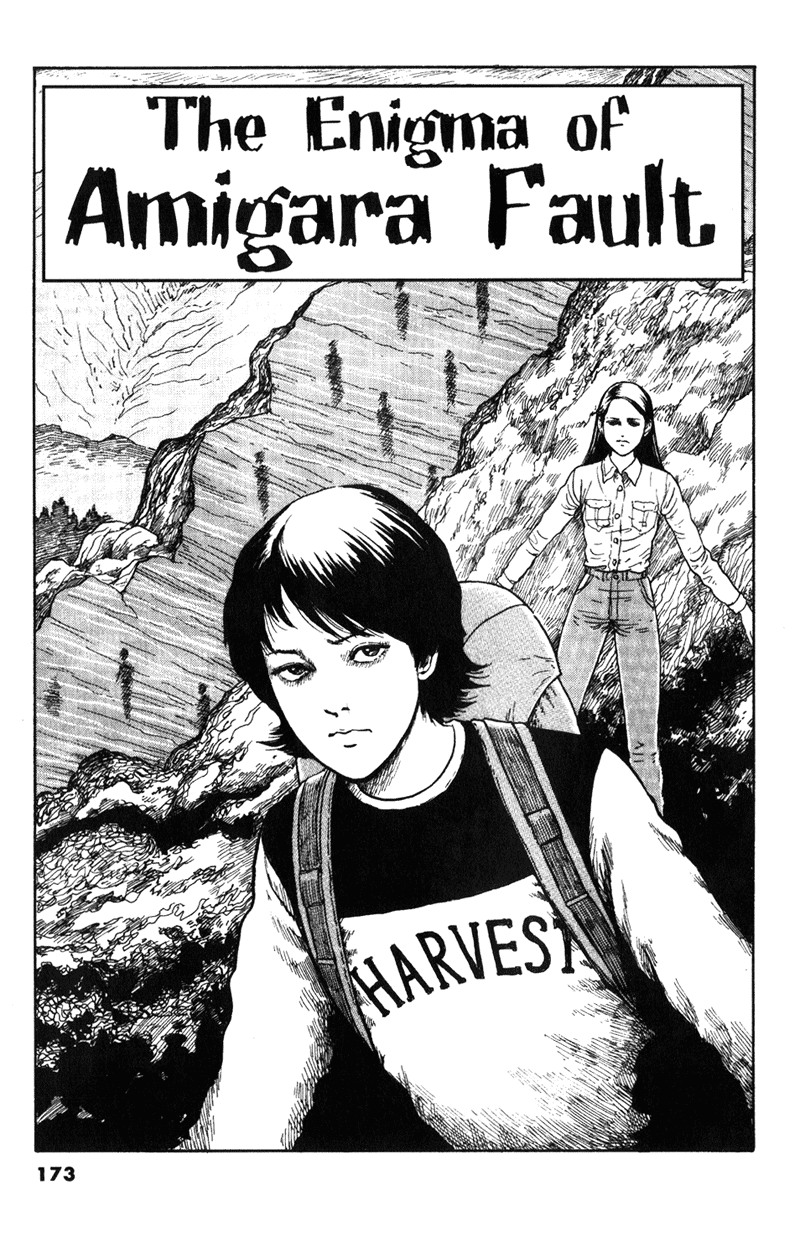
?Gyo? ends with another spooky and highly bizarre work of fiction.
Following an earthquake in an unnamed prefecture of Japan, a fault is discovered on Amigara Mountain, very close it?s epicentre. On the slopes of the mountain, two hikers meet; a man named Owaki and a woman named Yoshida who have both come to see the fault, which has captured the attention of the world. Following the sound of voices to the fault, the two of them marvel at the strange sight before them: countless human-shaped holes in a rock face exposed by the earthquake.
Scientists begin to poke around and try and understand why this happened, but before they can try and work it out, people begin to climb into holes that just so happen to fit their outline perfectly, as if the holes were made for them. Yoshida finds her hole and begins to feel terrified of it because she desperately wants to go into the said hole, despite knowing that she may well be trapped in there and inevitably die.
This psychological aspect of compulsion is the main driving force for this story?s horror. You may have experienced a similar sensation yourself. I will give you an example of my own. Despite feeling immensely uncomfortable around heights, I will occasionally have the thought of wanting to jump off said height, despite knowing that I will most certainly die when I hit the bottom (I am not suicidal I promise!). I heard this feeling described as ?Call of The Void?.
With the lack of any evil forces, this story explores the idea of people having a desire to harm themselves and the intrinsic human impulses of curiosity and destruction (which is also present in Junji Ito?s other works) which can, invariably, be the end of themselves. This can be found in many of the works of Lovecraft, who I have mentioned before influenced Junji Ito and his wonderful and horrible works.
Coda
All three stories are incredibly varied and pose many interesting questions of the mind of the human condition, with ?Gyo?, I believe, providing the biggest commentary on this subject. Despite feeling completely disgusted with the illustrations and my additional research, I am glad I read and researched these, as I feel I have a better understanding of the world around me and myself that despite all that I say or do, I am a sane person?mostly.
The next blog on Junji Ito?s work will probably be the shortest blog in the series as it will focus on ?Junji Ito?s Cat Diary: Yon & Mu?.
What do you think of ?Gyo?? Which part disturbed/scared you the most? Why do you think the two short stories were included in this book?
Let?s start a conversation, people!
